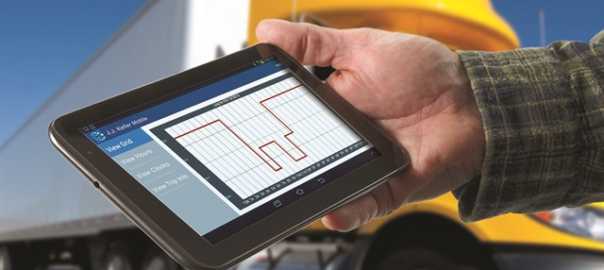After years of debate and legal challenges, the Electronic Logging Device Mandate is finally set to come into force from Dec 18, 2017. The Federal Motor Carrier Safety Administration calls for all interstate carriers to use trucking software ELD for recording drivers' hours instead of paper logs. This mandate is expected to create a paradigm shift in the trucking industry scene as it transforms the competitive landscape of the industry into a more level playing field.
Some carriers have already made the transition from paper logs to e-logs, known as Automatic OnBoard Recording Devices (AOBRD). These devices are seen as a predecessor to the ELD and considering the investment the carriers have made in these devices, the mandate allows such carriers an extended deadline of 2 more years to move to ELDs. Carriers using the latest generation of AOBRD systems can upgrade their trucking software to ELD compliant with the mandate without having to replace their in-cab hardware.
Truckers replacing their old trucks with new ones are also allowed to use AOBRD systems for these trucks till the extended deadline. But new trucks added to expand the fleet are required to be equipped with ELDs meeting the technical specifications of the mandate. Expanding fleets that choose to retain their e-log systems while using ELD for new trucks may face a situation of having to manage both. Fleet analysts warn against using a mix of both the systems, as it can lead to inconvenience when drivers move from truck to truck. It could also lead to confusion in roadside inspections as an AOBRD uses display of information whereas the ELD uses electronic file transfer.
Expected changes in the supply chain and possibly, the prices too
While this move is expected to make carriers more safer and efficient through improved planning facilitated by the data provided by the devices, it does not come without challenges. A major concern is the productivity decline most experts and fleet analysts foresee after the implementation of the ELD mandate. Most experts agree that the industry’s freight hauling capacity may contract by around 5% when the ELD’s come into effect. Any changes in the supply chain has a direct effect on the pricing and the market share too could possibly shift.
Dedicated fleets will be the most hit as electronic logs have a greater impact on the nature of operation of these fleets that include more touching of freight and stops along the route. Werner Enterprises Inc., a truckload carrier made the transition to e-logs trucking software 20 years ago. In the first year of transition, the carrier faced a dip in the productivity with a loss of 4.5% and it took the company 3 years to get back to neutral.
CEO of Werner Enterprises, Derek Leathers says he expects the industry’s overall freight hauling capacity may contract by 2.5%-5%. He also agrees that the conversion to ELDs is beneficial for the industry as it promotes an uniform playing field. The uniform playing field will in turn make the businesses more price competitive. Regional loads with a shorter length of haul will benefit the most from competitive prices.
The challenges in adapting to the ELDs
Another challenge in this industry wide transition to ELDs is drivers being educated and trained to understand the trucking software system. Not just the drivers, other employees like the dispatchers and office personnel face the challenge of improving their logistics planning and assigning loads in line with the driver's hours-of-service status. Inspection officers of Department of Transportation are required to undergo training to identify the mobile trucking software of AOBRDs and ELDs which may be quite tricky.
So, industry experts are of the opinion that the earlier the trucking companies make the transition to ELDs the easier it will be in overcoming these challenges. Shippers are already partnering with transportation management system compliant carriers before the mandate comes into effect. Customer and shipper behaviour is shifting towards the mandate compliant carriers as a market share shift is imminent. This might result in shippers struggling to find enough trucks for their freight. Bringing more trucks on the road is the solution to offset the capacity loss the mandate may bring. But it is another ordeal as the market has witnessed a shortage of drivers for a long time.
The implementation of the trucking software ELDs may also call for the increase in the number of relays due to the hours-of-service issues. This is necessary as situations like a truck stuck in traffic may run out of hours for making a delivery. But the safety and efficiency that come with the ELDs outweigh the challenges. That is why all major trucking companies have either already made the transition to enterprise trucking software or are gearing up for the change.
